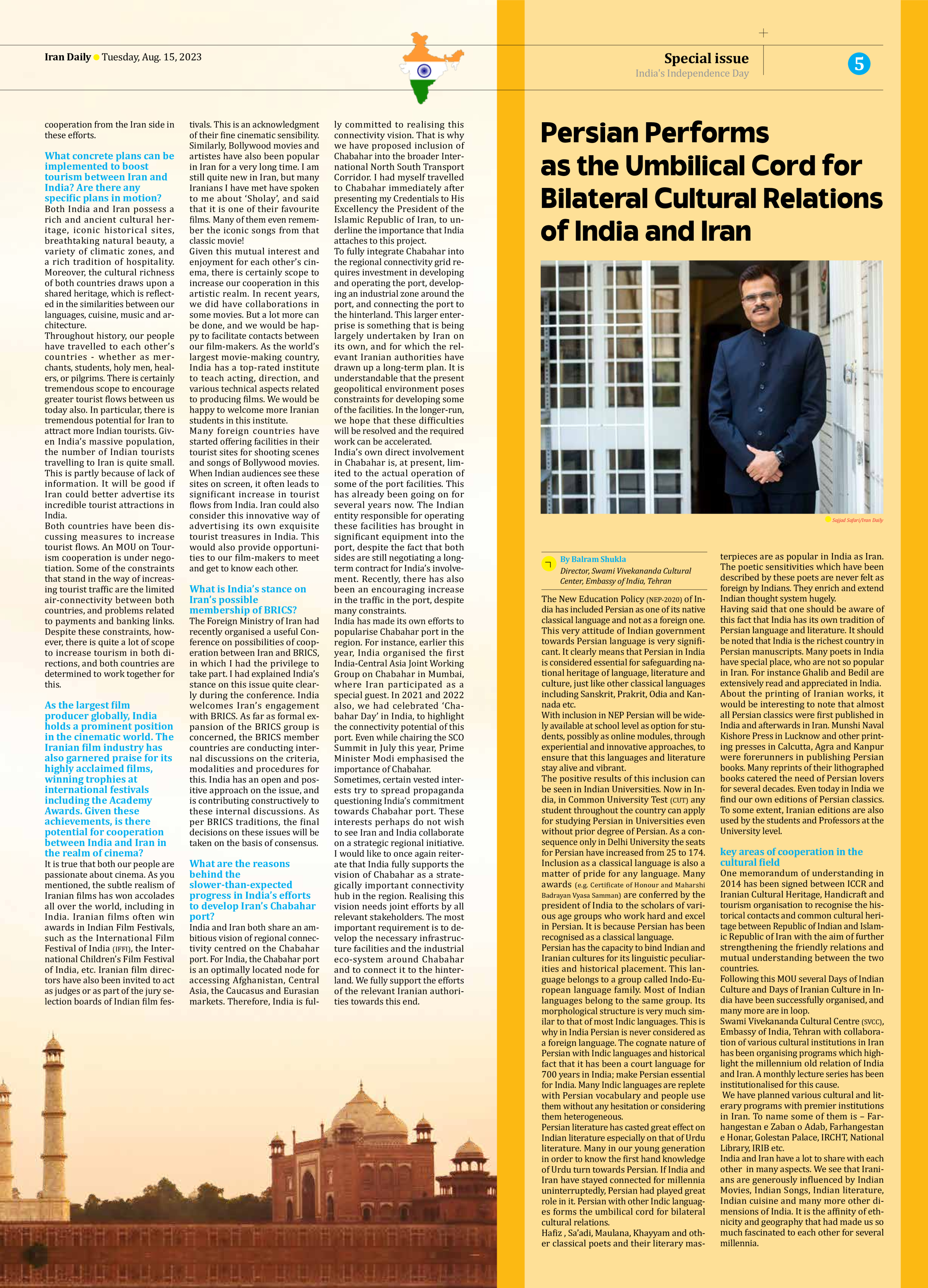
Persian Performs as the Umbilical Cord for Bilateral Cultural Relations of India and Iran
the New Education Policy (NEP-2020) of India has included Persian as one of its native classical language and not as a foreign one. This very attitude of Indian government towards Persian language is very significant. It clearly means that Persian in India is considered essential for safeguarding national heritage of language, literature and culture, just like other classical languages including Sanskrit, Prakrit, Odia and Kannada etc.
With inclusion in NEP Persian will be widely available at school level as option for students, possibly as online modules, through experiential and innovative approaches, to ensure that this languages and literature stay alive and vibrant.
The positive results of this inclusion can be seen in Indian Universities. Now in India, in Common University Test (CUT) any student throughout the country can apply for studying Persian in Universities even without prior degree of Persian. As a consequence only in Delhi University the seats for Persian have increased from 25 to 174.
Inclusion as a classical language is also a matter of pride for any language. Many awards (e.g. Certificate of Honour and Maharshi Badrayan Vyasa Samman) are conferred by the president of India to the scholars of various age groups who work hard and excel in Persian. It is because Persian has been recognised as a classical language.
Persian has the capacity to bind Indian and Iranian cultures for its linguistic peculiarities and historical placement. This language belongs to a group called Indo-European language family. Most of Indian languages belong to the same group. Its morphological structure is very much similar to that of most Indic languages. This is why in India Persian is never considered as a foreign language. The cognate nature of Persian with Indic languages and historical fact that it has been a court language for 700 years in India; make Persian essential for India. Many Indic languages are replete with Persian vocabulary and people use them without any hesitation or considering them heterogeneous.
Persian literature has casted great effect on Indian literature especially on that of Urdu literature. Many in our young generation in order to know the first hand knowledge of Urdu turn towards Persian. If India and Iran have stayed connected for millennia uninterruptedly, Persian had played great role in it. Persian with other Indic languages forms the umbilical cord for bilateral cultural relations.
Hafiz , Sa’adi, Maulana, Khayyam and other classical poets and their literary masterpieces are as popular in India as Iran. The poetic sensitivities which have been described by these poets are never felt as foreign by Indians. They enrich and extend Indian thought system hugely.
Having said that one should be aware of this fact that India has its own tradition of Persian language and literature. It should be noted that India is the richest country in Persian manuscripts. Many poets in India have special place, who are not so popular in Iran. For instance Ghalib and Bedil are extensively read and appreciated in India.
About the printing of Iranian works, it would be interesting to note that almost all Persian classics were first published in India and afterwards in Iran. Munshi Naval Kishore Press in Lucknow and other printing presses in Calcutta, Agra and Kanpur were forerunners in publishing Persian books. Many reprints of their lithographed books catered the need of Persian lovers for several decades. Even today in India we find our own editions of Persian classics. To some extent, Iranian editions are also used by the students and Professors at the University level.
key areas of cooperation in the cultural field
One memorandum of understanding in 2014 has been signed between ICCR and Iranian Cultural Heritage, Handicraft and tourism organisation to recognise the historical contacts and common cultural heritage between Republic of Indian and Islamic Republic of Iran with the aim of further strengthening the friendly relations and mutual understanding between the two countries.
Following this MOU several Days of Indian Culture and Days of Iranian Culture in India have been successfully organised, and many more are in loop.
Swami Vivekananda Cultural Centre (SVCC), Embassy of India, Tehran with collaboration of various cultural institutions in Iran has been organising programs which highlight the millennium old relation of India and Iran. A monthly lecture series has been institutionalised for this cause.
We have planned various cultural and literary programs with premier institutions in Iran. To name some of them is – Farhangestan e Zaban o Adab, Farhangestan e Honar, Golestan Palace, IRCHT, National Library, IRIB etc.
India and Iran have a lot to share with each other in many aspects. We see that Iranians are generously influenced by Indian Movies, Indian Songs, Indian literature, Indian cuisine and many more other dimensions of India. It is the affinity of ethnicity and geography that had made us so much fascinated to each other for several millennia.







